Z77 mITX Round-Up: Five of the Best – MSI, Zotac, ASRock, EVGA and ASUS
by Ian Cutress on December 31, 2012 7:00 AM EST- Posted in
- Motherboards
- MSI
- ASRock
- EVGA
- ZOTAC
- Asus
- Ivy Bridge
- Z77
- mITX
ASUS P8Z77-I Deluxe In The Box
Out of the motherboards tested in this roundup, the ASUS P8Z77-I Deluxe comes near the top in terms of cost – only to be outdone by the EVGA Z77 Stinger. Technically there is not much scope for additions in the box, for example no USB 3.0 bracket is needed unless a vendor decides to put a second USB 3.0 header on board – which is a limited possibility with the lack of PCB space on offer. Typically ASUS kit out their high end motherboards quite well, and as this is the ‘high-end’ mITX product, we hope for the best.
In the P8Z77-I Deluxe box, we get:
Driver Disk
User Guide
Rear IO Shield
Four SATA Cables
Two Antenna
ASUS Q-Cable
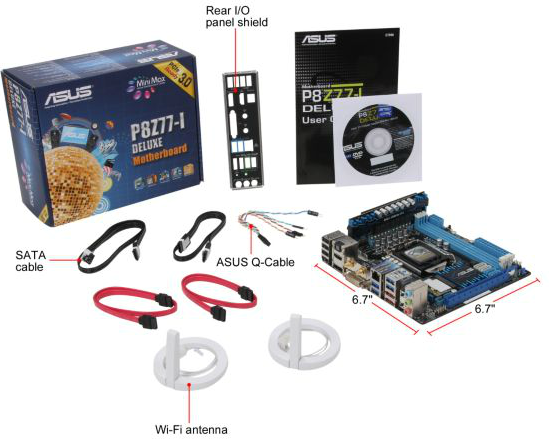
The WiFi antenna in the box use ASUS’ magnetic ring design, with part of the aerial designed to be perpendicular to the rest of the ring. Using two of these attached to a metal case usually provides ample opportunity for maximizing 2.5 GHz / 5 GHz WiFi reception. In the case of the WiDi model of this board, it would also help with video streaming.
The Q-Cable is a handy way of extending out the front panel connectors so both save space and make them easier to attach. Four SATA cables fill our complement, one for each internal SATA port on the board.
ASUS P8Z77-I Deluxe Software
When reviewing a motherboard, having a nice software install and selection to choose from puts me in a good mood. I want to install XYZ and then let the machine do its thing – if I have to sit around and press OK/Yes repeatedly, it zaps my energy and good hearted cheer, especially when most of the installers used have silent install options. Thankfully, we get the easy option with ASUS.
Now one thing that should be brought to light is the concept of licensing deals with installation packages. Some manufacturers go out and organize bulk licensing deals for useful software with the motherboards. Other bits of software are used as advertising, wherein the user gets a ‘free 30 day trial’ to some software as part of the installation package. This one technically generates revenue to help bring the cost of the product down, at the annoyance of the user trying to install the package.
ASUS does the latter by a factor two: we get Google Chrome and Norton Internet Security as part of the package. I am a big advocate of Chrome, and given that it is free to download I am hoping that ASUS added it on to the install disc out of kindness rather than as a money driven exercise. I am not a fan of Norton products though, and often disable the install.
ASUS wrap their OS software into one install package with multiple options – they call this AI Suite II, which we have seen on ASUS motherboards for at least the past couple of years, with minor incremental updates over time.
AI Suite II
The main bar of AI Suite splits the sub-programs up into groups, with major utilities having their own buttons. In the case with the P8Z77-I Deluxe, this is the Auto Tuning option for overclocking. We will go through these utilities in turn.
TurboV Evo
TurboV Evo is the operating system based overclocking tool provided. It allows for changes of all the important voltages and frequencies onboard, as well as providing the Auto Tuning options for ‘Fast’ and ‘Extreme’ overclock settings. I usually find TurboV Evo a good bit of kit when overclock testing, though I would like to put in some values by numbers rather than having to fiddle with sliders all the time.
DIGI+ Power Control
In order to give users better control over the power delivery, ASUS implements their DIGI+ Power Control on the mITX boards as well. There are fewer options here than on some of their higher end motherboard offerings, but if a user wants to give more current capabilities or adjust load line calibrations through the OS for overclocks, the options are here for the CPU (but not the RAM like on the larger boards).
In a similar vein, we also have the EPU (Energy Processing Unit) menu and settings, designed to adjust and power gate different parts of the motherboard to save energy.
Fan Xpert
ASUS are well known in the motherboard space for using better fan controllers than most of the motherboard industry – typically one per fan header which is configurable within the BIOS and in software. The beauty of these fan headers lie in their independent control – the system has access to the RPM output and can adjust the speed on the fly. Pair that up with some software that actually can manipulate such a system and we have a nice fan configuration. The software behind this is Fan Xpert – bundled as part of AI Suite, it will test all the fans in the system and provide RPM vs. Power applied values (as this relationship is rarely linear). This allows users to adjust the temperature/RPM curves as required – the only thing missing is the ability to apply hysteresis.
WiFi Go! and WiFi Engine
Much in the same way that Dropbox or Google Drive is used to synchronize files between devices, ASUS has its own non-cloud solution for use between a PC and a mobile device in the form of WiFi Go!
WiFi Engine allows the user to configure the PC as either a normal client, or as an access point for other computers to connect to. This allows users to install a WiFi access point in their property if they do not already have one, or extend the range of an existing connection – as long as the machine is switched on of course. If the motherboard was used in a HTPC/NAS type environment via Ethernet cable, then setting up the motherboard as an access point would actually be very useful.
Ai Charger+ and USB Charger+
These two fast charging utilities are used to force more current though one USB port for fast charging of compliant devices. A USB port might only send 100 mA (USB 2.0) or 300 mA (USB 3.0) while in ‘data’ mode, but these utilities allow certain ports to go into a ‘Battery Charging Specification’ mode, which depending on the version that ASUS are using, might result in up to 900 mA with data or 1500 mA without data in S3.
It should be noted that this solution fast charges all smartphones and tablets that are compliant while under S1, S3 and S4, whereas other charging features on other motherboards are limited to Apple devices currently.
USB 3.0 Boost
As part of the ASUS methodology, we have onboard an ASMedia controller which can take advantage of the most up to date USB 3.0 transfer protocols. By attaching a compatible USB 3.0 device, and a click of the USB 3.0 Boost interface, the software will apply a driver over the standard ASMedia driver in order to enforce these under the hood commands. As we have shown in previous reviews, this affords a nice bump in the speeds provided at low transfer size workloads, making a USB device more tenable for everyday random access use rather than just storage. USB 3.0 Boost can also apply a modified driver to the chipset USB 3.0 ports for a similar boost using BOT protocols rather than UASP. (Note, this is fairly moot for Windows 8, where UASP is part of the standard driver package for all compliant devices, and BOT for non UASP-compliant ones.) Standard Intel USB 3.0 ports also get a boost under Windows 7 with a slightly different modified driver.
Network iControl
For the past couple of years it has been clear that users in the motherboard industry would prefer the ability to manipulate the network ports onboard their system. While doing some epic downloading while playing a twitch FPS online is a little bit of an odd combination, using software tools in the OS to manage the priority of these programs is never a bad thing. On the ASUS side this comes in the form of Network iControl, and within this software the user can adjust the software that uses the Ethernet connections and rank them in order of priority. Alternatively the system can be left on automatic, and the program will use a series of pre-defined rules to prioritize a lot of the well known programs that typically rely on low-latency throughput.
USB BIOS Flashback
Rather than update the BIOS through the BIOS or OS, users can opt to flash the BIOS using USB BIOS Flashback. This utility is also handy as the BIOS can be flashed without a CPU, memory or GPU present – the ultimate fallback if the BIOS is corrupted or unrecoverable. The USB BIOS Flashback utility in AI Suite allows users to set up a USB with the correct files for USB BIOS Flashback if they do not wish to use the OS utilities.



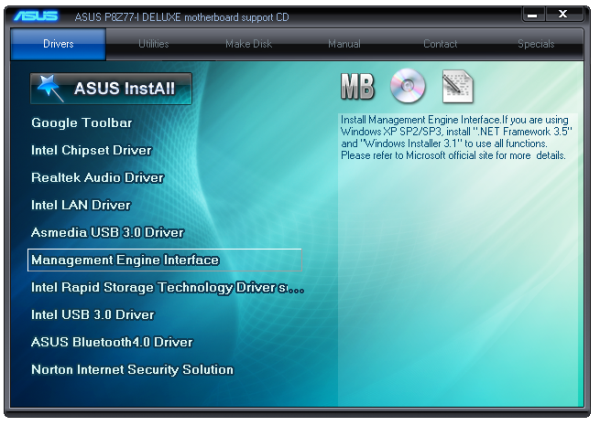

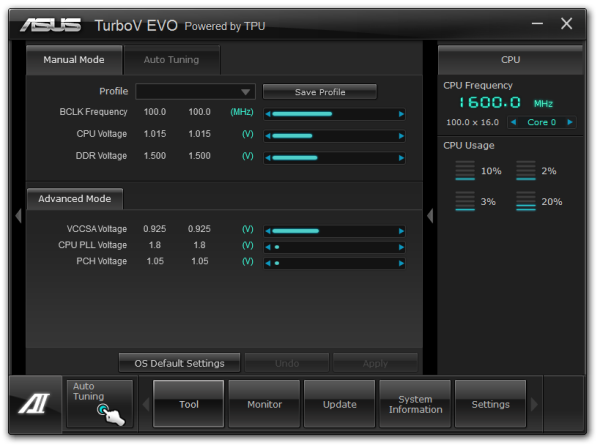
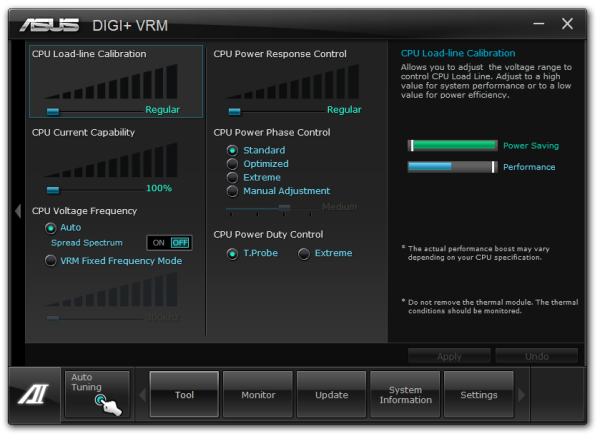
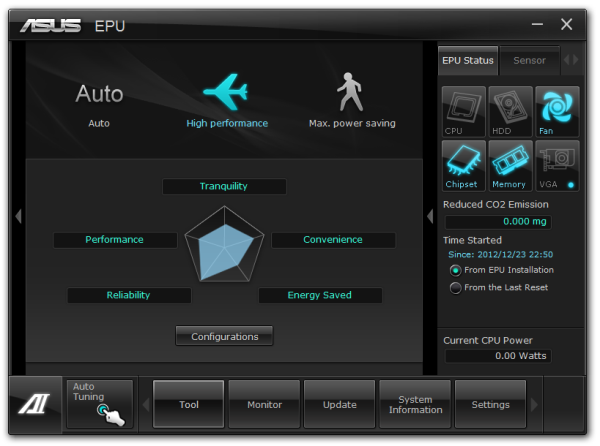
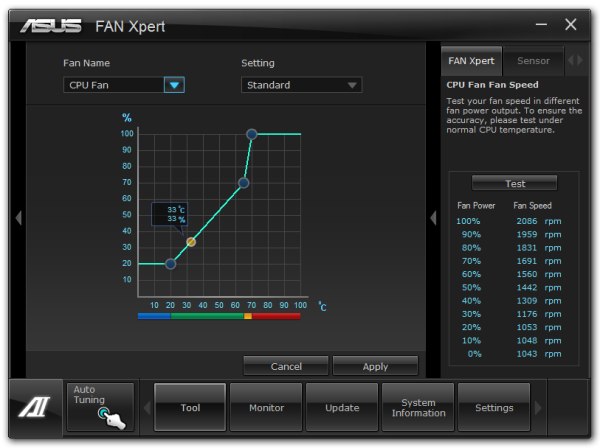
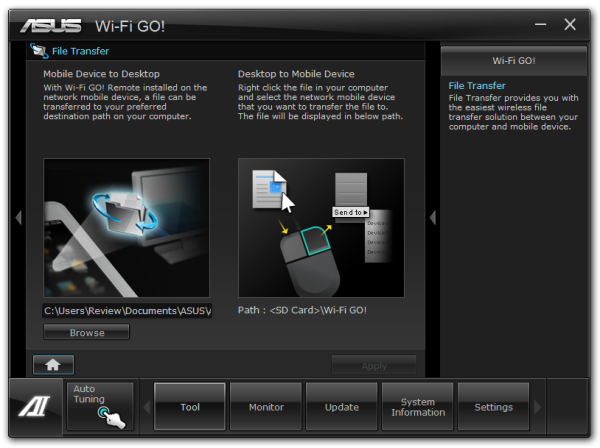
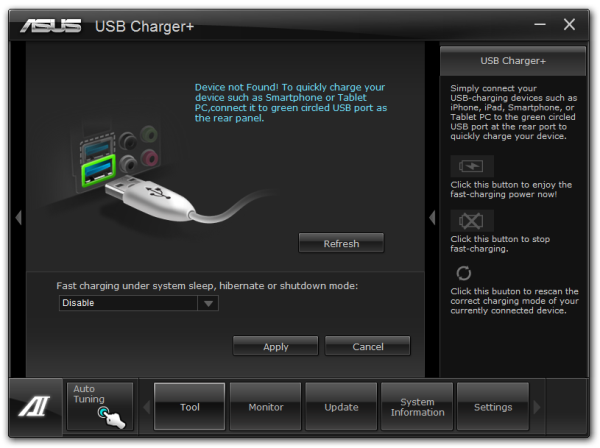
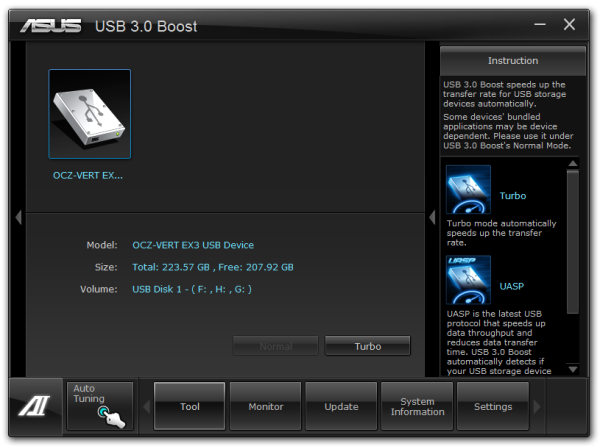

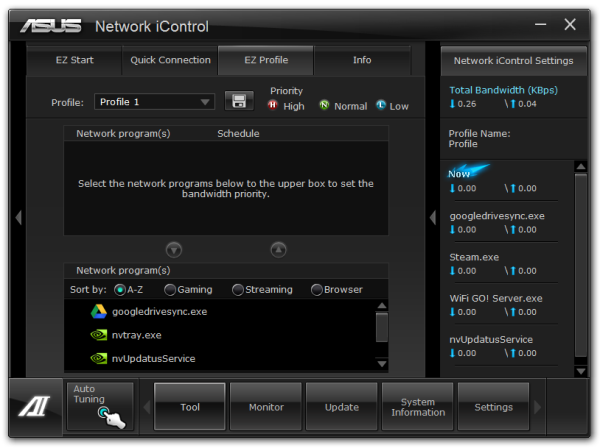
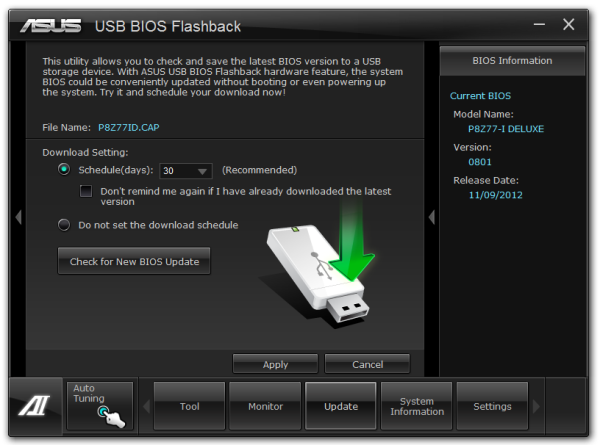














54 Comments
View All Comments
mike_b - Monday, December 31, 2012 - link
Interesting article, but I have to ask why would someone spend more for a Z77 chipset when using 'just' an i3? Surely a much cheaper H61 chipset could do the job admirably, and at much lower cost.Z77 makes sense if you're overclocking, which is excluded from this test...
IanCutress - Monday, December 31, 2012 - link
H61 has no chipset USB 3.0, no chipset SATA 6 Gbps, and you are limited to PCIe 2.0. H61 is also technically limited to one single sided DIMM per channel, and no SATA RAID. There's also SRT to consider, that would be advantageous with the ASRock and the mSATA on the rear.Ian
mike_b - Monday, December 31, 2012 - link
It might make an interesting comparison to see what net advantage is gained with the added features of the Z77 chipset compared with the H61. If budgets are limited the ~100 dollar cost difference between the Z77 and H61 mainboards makes a big difference; that money saved could be put into something which makes more of a performance difference (SSD rather than HDD for example).Anandtech is one of the best tech sites around, you guys do a great job. I do sometimes see though an emphasis on more expensive products when in terms of real-world performance you could get almost the same thing at a much cheaper price. Might be worth mentioning somewhere.
Not least because with yet another new socket coming with Haswell all these 1155 boards will be seen as out of date soon anyway.
IanCutress - Monday, December 31, 2012 - link
Once we get into the swing with Haswell, we will hopefully covering the whole spectrum. Though it is worth noting that motherboard manufacturers, want to put their best foot forward, and would prefer their halo/channel boards get covered before their OEM / low end offerings. Hence this is why you rarely see many mainstream reviews that are not from forums dedicated to the market segment and users testing their own equipment. We are hoping to rectify the balance in due course. If there are any specific products you might want us to test or examine, drop me an email and I'll see what I can put in my schedule (as full as it is[!]) :)Ian
StormyParis - Monday, December 31, 2012 - link
This is a major issue, not limited to motherboards: whenever I'm looking for something middle of the road or outright cheap, I can't find reviews.These Z77 MBs are a nice example: even though I'm recommending/building PCs regularly, most of them mini-ITX, I never came across a use case for Z77. Nobody apart from teens that still have something to prove overclocks anymore. People who want to do multi-GPU get a big case, and a big board. Are we supposed the extrapolate that the makers of good Z77 boards also make good H77 and H61 boards ?
I understand you've got to make do with what you're given by the OEMs. And that reviews was very good, as usual. Pity it is irrelevant ?
Tech-Curious - Monday, December 31, 2012 - link
That's an interesting observation. I have to say, I never noticed a significant lack of coverage for low-to-mid-range components (either in general or on Anandtech in particular), until this Fall, when I was in the market for a lower end motherboard.I guess I just always gravitated to higher end mobos before. Or maybe the coverage for such products was more comprehensive years ago. My memory's foggy, so it's hard to say.
In any case, motherboards appear to be the exception. If anything, I think the internet has generally grown more bullish on low-to-mid-range CPUs and GPUs in recent years (probably, in part, as a result of the stagnating console situation, which results in stagnating system requirements for games).
But all of that rambling aside, yeah. It'd be nice to see more diverse motherboard analysis. When I bought a b75 a couple of months ago, I literally couldn't find a review for that chipset. It wasn't a big deal; it's not like b75's features are any great mystery, after all -- but it is a little nettlesome to trip over sixty bajillion z77 reviews when there's nary peep about any other chipset.
In other news, Ian's review is a good one -- and given that I've been a faithful user of Asus motherboards for the last 15 years, it's nice to see them take home the prize. :)
Etern205 - Saturday, January 5, 2013 - link
My guess would be, why review a cheap board when majority of the readers here won't even bother buying it?And as for Asus boards, I've heard, they do something called based-line features. This means all boards from the bottom of the range to the top (Intel B75-Z77) will have the same base-line features, other features are just added like BT, WiFi, extra lan, etc.
Tech-Curious - Wednesday, January 9, 2013 - link
Yes, I think the issue is that (at least with respect to Intel chipsets) low-end motherboards don't support overclocking. So they're both less interesting to review (fewer measurable differences in performance among different models), and they're less appealing to the presumed audience of sites like Anandtech.Still, the B75 is a perfectly good chipset. If you aren't heavily invested in overclocking, z77's advantages are likely wasted on you. Personally, I'm well beyond my overclocking days; I just don't have the time or the patience to go through the almost endless tuning process anymore. (Even if you find a stable OC at the outset, it can become unstable later, and/or a given application might expose instability that stress testing didn't, weeks or even months down the road).
jonjonjonj - Friday, January 4, 2013 - link
just cause you don't overclock doesn't mean other people don't. why wouldn't you? because you want to get the fastest cpu that you can afford means you have something to prove? some people are just idiots.Zap - Monday, December 31, 2012 - link
But there isn't a $100 difference between H61 and Z77. There is a cheaper Gigabyte Z77 ITX board that's only around $60 more than the cheapest H61 ITX board, and it was even on sale recently for another $13 off making it less than $50 difference.Alternately one can go the H77 ITX route and get all the Z77 goodies except for overclocking, for around $30 less than the cheapest Z77 ITX. I think $30 more than H61 is reasonable for those extra features, plus guaranteed out-of-the-box BIOS support for Ivy Bridge.
I do agree with your (mike_b) first post regarding the choice of CPU used. Ian Cutress, didn't you have a spare K CPU laying around? There are so many people building overclocked ITX rigs these days. I did in a Silverstone SG05 with low profile air cooler to hit 4.2GHz. Plenty of others use the Bitfenix Prodigy and liquid cooling to hit clocks normally reserved for ATX rigs. Another review site (Tweaktown) tested overclocking on Z77 ITX boards and the ASRock hit near 4.8GHz. THAT'S what I want to see.
Of course this AnandTech roundup has some very useful information too, such as DPC latency tests and POST times. Keep up the good work there! But please, know your audience. Next time if the board is supposed to be overclockable, test that feature.
Maybe there can be a companion article about overclocking and heatsink clearance? Would be a shame to not overclock this nice collection of Z77 ITX boards.